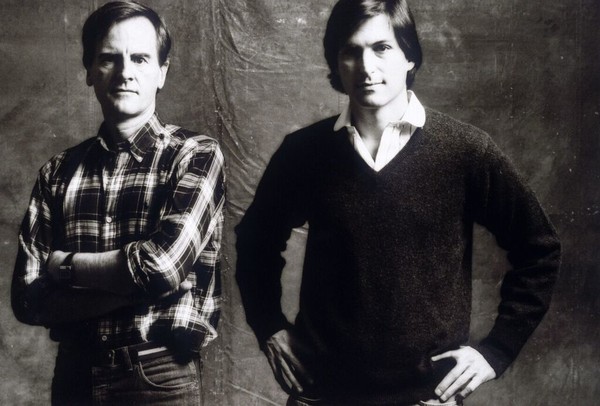
Advertising alum Jonathan Goldman produces exhibitions for the Inter-American Development Bank (IDB) in Washington, D.C.
Product Design alum Mariana Prieto is an independent contractor specializing in social impact design.
feature / alumni / faculty / advertising / interaction-design / media-design-practices / product-design / designmatters / internships
April 25, 2016
Writer: Brenda Rees
Social innovation designers pioneering new career paths
Social innovation designers are changing the way the world works, dedicated to improving everyday life through global health and sustainable development, public policy and social entrepreneurship. Without the career paths afforded by more traditional design professions, they’ve also become pioneers on the frontier of an expanding field.
“There is a certain type of person attracted to this career, and the common denominator is people who are passionate, who are problem solvers, who love to connect a lot of complicated dots,” says social impact designer Mariana Prieto. “You have to be very comfortable with being uncomfortable, being in new environments with new people. You have to forget all your biases and opinions and see the world through someone else’s eyes.”
At the turn of this century, ArtCenter had the foresight to tap into the emergent field of creativity-with-a-social-consciousness by establishing the Designmatters program, which continues to nurture, instruct and inspire a new generation of social design thinkers. We recently connected with two Designmatters Concentration alumni, Prieto and Jonathan Goldman—along with Designmatters Fellow Mari Nakano—as the program marks its 15th anniversary.
“This year, we look back and celebrate the pioneering leadership of Designmatters in the larger field of art and design education for social impact and innovation,” says Mariana Amatullo, Designmatters co-founder and vice president. “We also look ahead, inspiring the community to continue engaging in shaping the future of the field through the curriculum and many initiatives facilitated by the department.”
Among its significant contributions to the field, this spring Designmatters released LEAP Dialogues, a resource book for social impact design education. The book features more than 80 contributors, many of them ArtCenter alumni, who share their career experiences and the challenges and opportunities in this fast-evolving profession. For alumni who’d been looking for a vocation that would allow them to flex their creative design muscles for a good cause, the Designmatters experience proved to be a game changer.
Mari Nakano:
Visual strategizing on a global scale
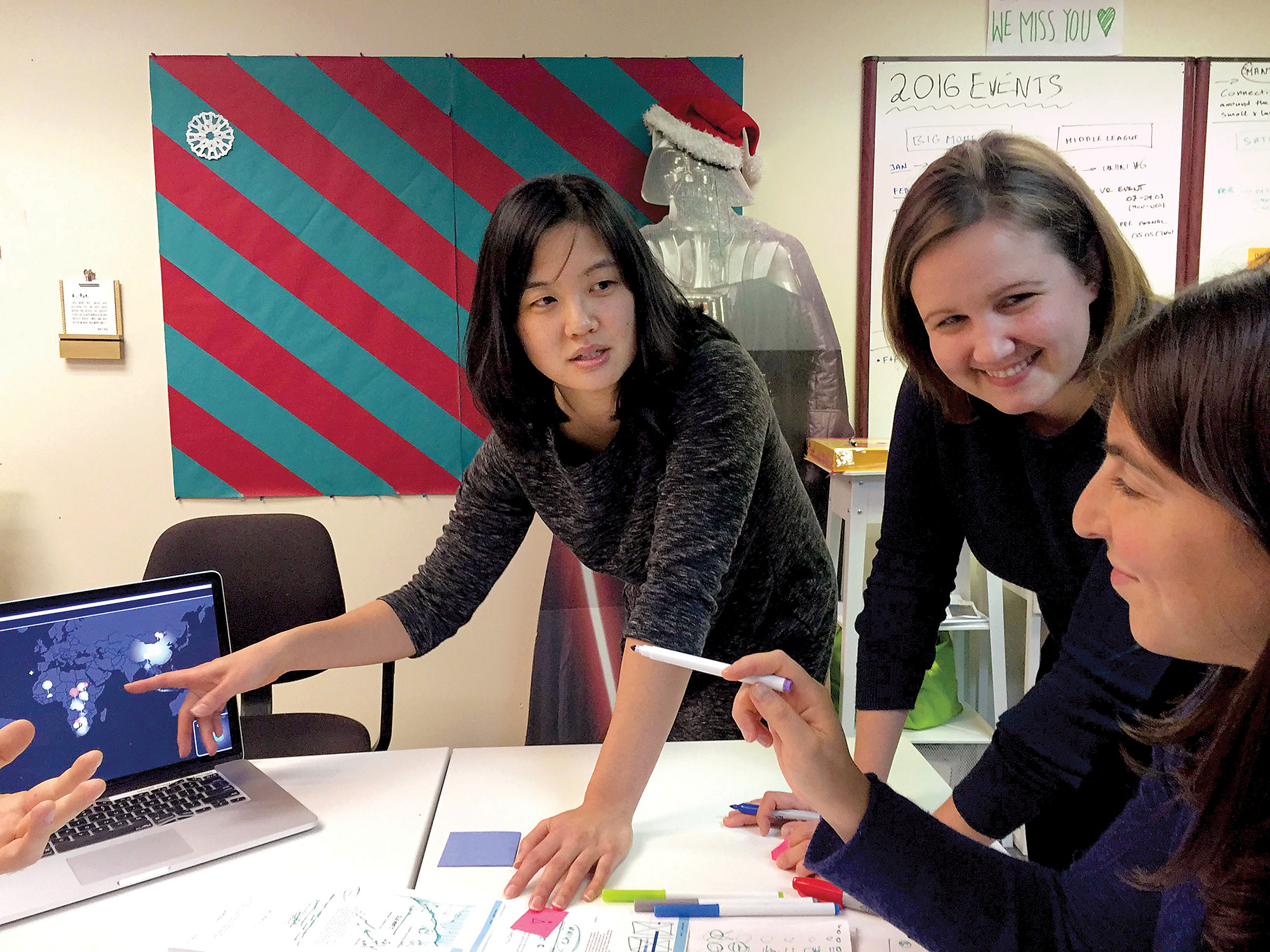
In one of her early career incarnations, Mari Nakano (MFA 10 Media Design Practices) saw herself as a bridge between low-income youth and the arts community when she served as Youth Services Coordinator at Downtown L.A.’s Little Tokyo Service Center, a community development corporation.
Today, Nakano is still serving youth and children but now on a global scale. As visual strategy lead for UNICEF’s Innovation Unit based in New York, Nakano is part of a 15-person team supporting one of the largest nongovernmental organizations that has a historical humanitarian reputation, with thousands of employees spanning numerous developing countries and territories.
When she arrived on the job in 2013, Nakano admits that sometimes the “old school” office attitude seemed cautious about innovation. But now more of her colleagues embrace a design attitude, a sign that social designers are becoming more integral in the overall workplace. “Every day is a new puzzle and that’s why I love it,” she says. “We are always digging around to find new problems to solve with a cool idea.”
With the recent launch of UNICEF’s Innovation Fund, Nakano’s unit will have a new avenue for collecting ideas and problems. The fund is a venture capitalist approach that will quickly assess, fund and scale companies, teams and ideas that have been developed in new and emerging markets to address the most pressing challenges facing children.
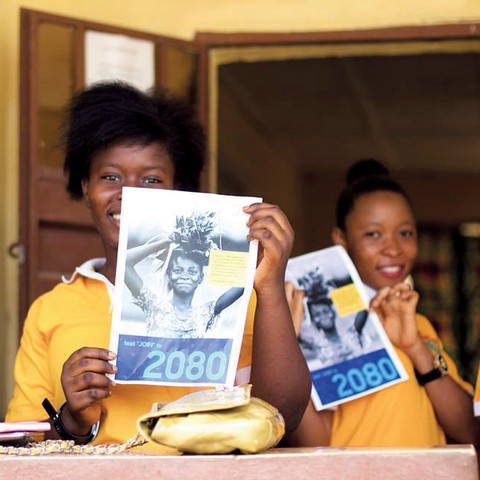
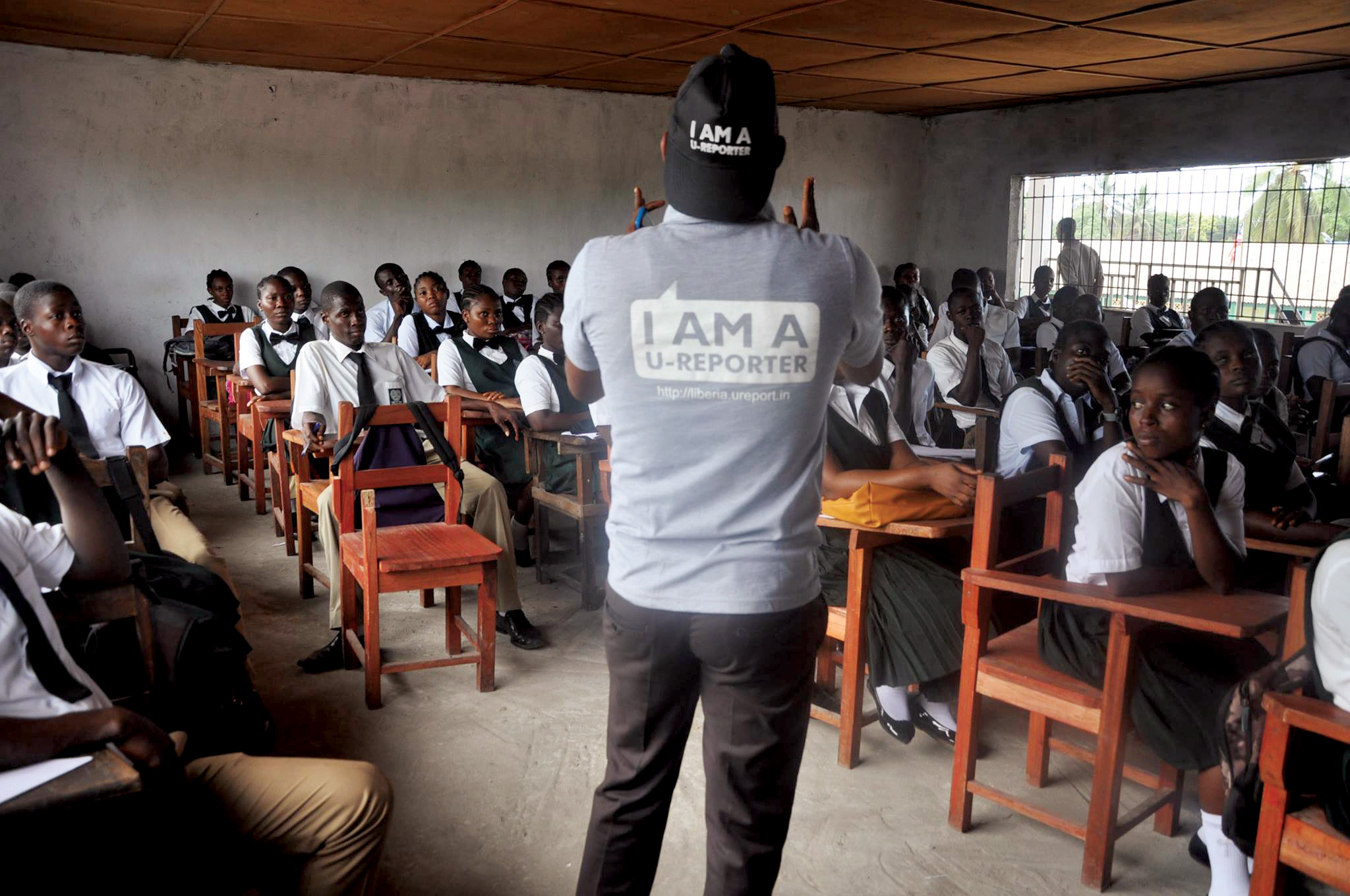
The Innovation Fund will also work with UNICEF’s field offices that can recommend local companies, teams and concepts. “A lot of our colleagues and partners have fantastic early-stage solutions but are not able to bring their ideas to life due to lack of resources,” says Nakano. “The Innovation Fund will support them so their great ideas can be taken to the next level and hopefully implemented into their programs and scaled nationally or globally.”
In her ongoing role as mentor for the Designmatters Fellowship program, Nakano worked with ArtCenter student and Designmatters Fellow Minji Gim (an Interaction Design major at ArtCenter) who designed the Innovation Fund website interface.
Also this year, Nakano is expanding UNICEF’s U-Report, a social messaging platform that connects young people in developing countries with each other and with decision makers. The program currently has 1.8 million users in 18 countries. “It’s customizable, open-source and can be deployed in a country in a matter of days,” she says. U-Report uses SMS technology, making it accessible on basic mobile phones so that young people can voice their opinions, report on critical news, learn what’s going on around them and share with other global reporters. U-Report has been used to help educate youth on HIV/AIDS, stop banana plagues and track the Ebola crisis, among other emergencies.
Overall, Nakano is pleased that the designer moniker is morphing so it’s not just about making something “look good.”
“Now my team and I are regularly brought into the conversation at the conceptual level so we can help design a system, solution or communication channel from the start,” she says. “I no longer need to explain what a designer means.”
Jonathan Goldman:
Innovating cultural exhibition design

Folding his passion for art and culture into his professional career, Jonathan Goldman (BFA 10 Advertising) chose internships and, later, jobs that directed his design-thinking talents in the service of humanitarian concerns.
His latest position as art collection curator for the Cultural Center at the Inter-American Development Bank (IDB) in Washington, D.C., is new for him and for the organization. IDB creates loans, grants and technical support crucial to Latin American and Caribbean countries working to reduce poverty and inequality.
Goldman—with self-described “nerdy tendencies”—is used to navigating new waters. While working toward his Advertising BFA at ArtCenter, he became the first Designmatters Concentration graduate when the concentration course of study was launched in 2010. Before coming to ArtCenter, he earned a degree in Chinese Studies, and after graduating from ArtCenter he went on to complete an MA in Exhibition Design.
It was through a Designmatters studio that Goldman was introduced to the Organization of American States (OAS), a multi-country institution supporting human rights and democratic issues. As a Designmatters Fellow he worked to revamp their brand identity, and later spent four years at the OAS Art Museum of the Americas.
Today, Goldman works in the IDB Creativity Department, which promotes innovation and creative industries in the context of international development and among the countries the organization supports—advocating that art, design and culture are a critical part of a healthy economic system and can be used to promote social equity and understanding.
Goldman arrived at the IDB just in time to produce its current Cultural Center exhibition Q&A with Seven Contemporary Cuban Artists, the first contemporary Cuban art exhibition in the District of Columbia since the embargo began.
Goldman has a big vision to reimagine the gallery/museum exhibition experience and sees the Cultural Center as a venue to present social issues, important questions and topics typically not found in art galleries. He is currently developing an upcoming exhibit on the theme of “video games as agents of social change” to examine how that industry has permeated cultures and generations.
“The old model of presenting culture is just not working,” Goldman says, pointing to museums and galleries experiencing declining visitations and exhibits that aren’t relatable to today’s multiethnic, multigenerational and technologically savvy audiences. “How do we innovate the idea of an exhibition in a cultural setting? How do we engage with audiences differently so that exhibits are more socially minded than simply academic histories?”
Still, talk is one thing, action another, muses Goldman, who wonders how museums and art galleries can effect real change in today’s society. “That’s the big question that others, including me, are asking,” he says. “We haven’t found it yet, but the answers are out there. I’m sure of it.”
Mariana Prieto:
Expanding the social designer’s repertoire
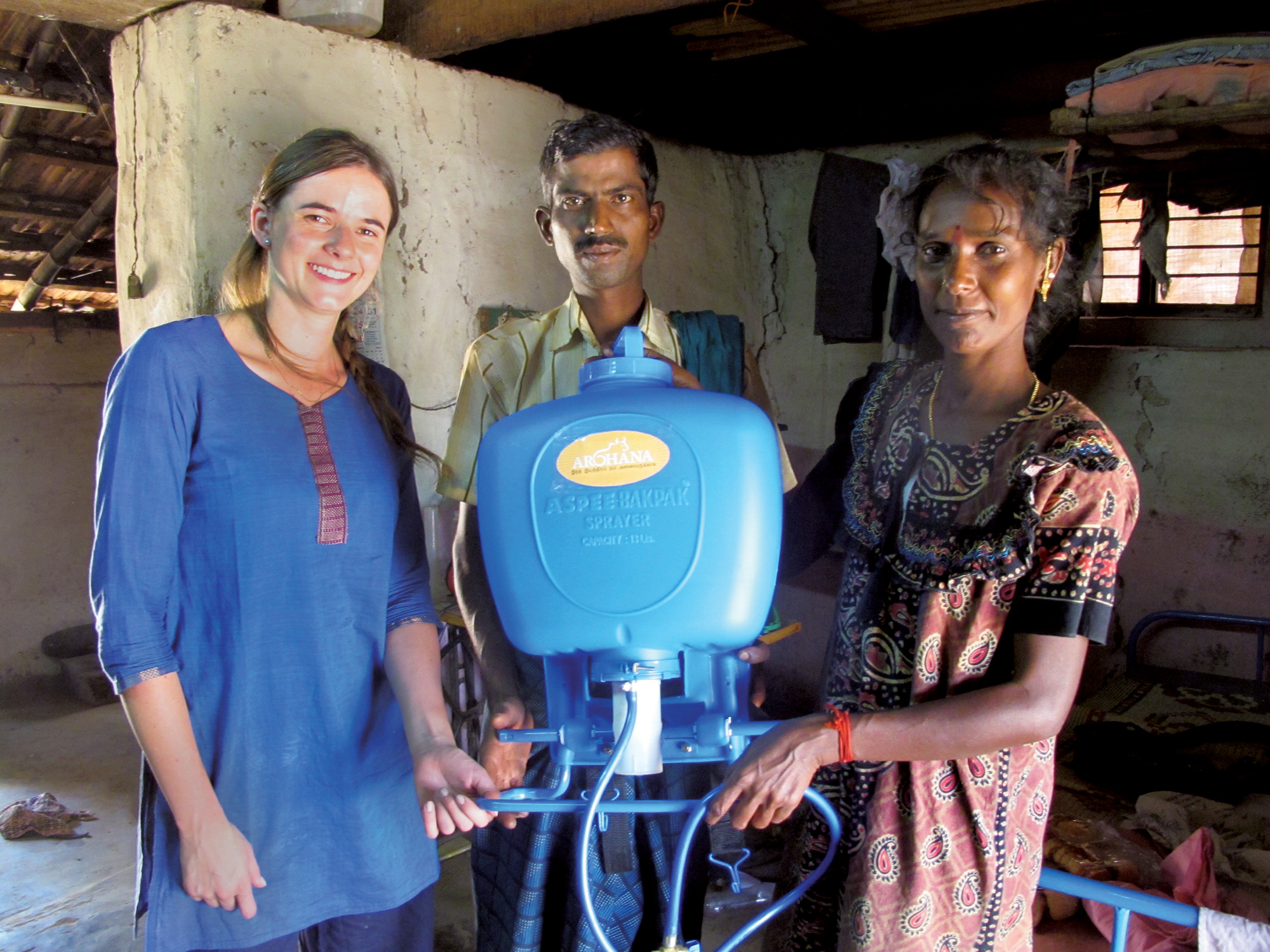
Unlike her fellow ArtCenter alumni who found full-time careers in established organizations, Mariana Prieto (BS 12 Product Design) is forging her vocation as an independent contractor specializing in social impact design. Based in New York, she typically works short-term projects that often take her to far-flung destinations such as South Africa, Thailand, the Philippines, India and Mexico.
The Colombian-born Prieto has been part of teams that have explored innovative solutions for complex social issues such as creating credit systems for the unbanked, defining informal workers and their role in healthcare for the Rockefeller Foundation, and creating companies with Polymath Ventures from scratch, built with the capacity to expand across Latin America.
So far, this career path has allowed Prieto the freedom to choose projects with themes she is passionate about, but occasionally she accepts projects that aren’t social impact-based, a practice she encourages others in her profession not to dismiss.
“These projects put things in perspective and give you a break,” she explains. “You can always learn from projects that aren’t social impact.”
Prieto describes a recent project that involved a high-end appliance company that wanted to target more mainstream consumers. She was the only designer on the team, working alongside 12 company employees, but after eight days her fellow teammates were “prototyping in the field and designing amazing tests. They got the process immediately,” she says with satisfaction. “If I do my job right, they won’t need me…until the next big challenge.”
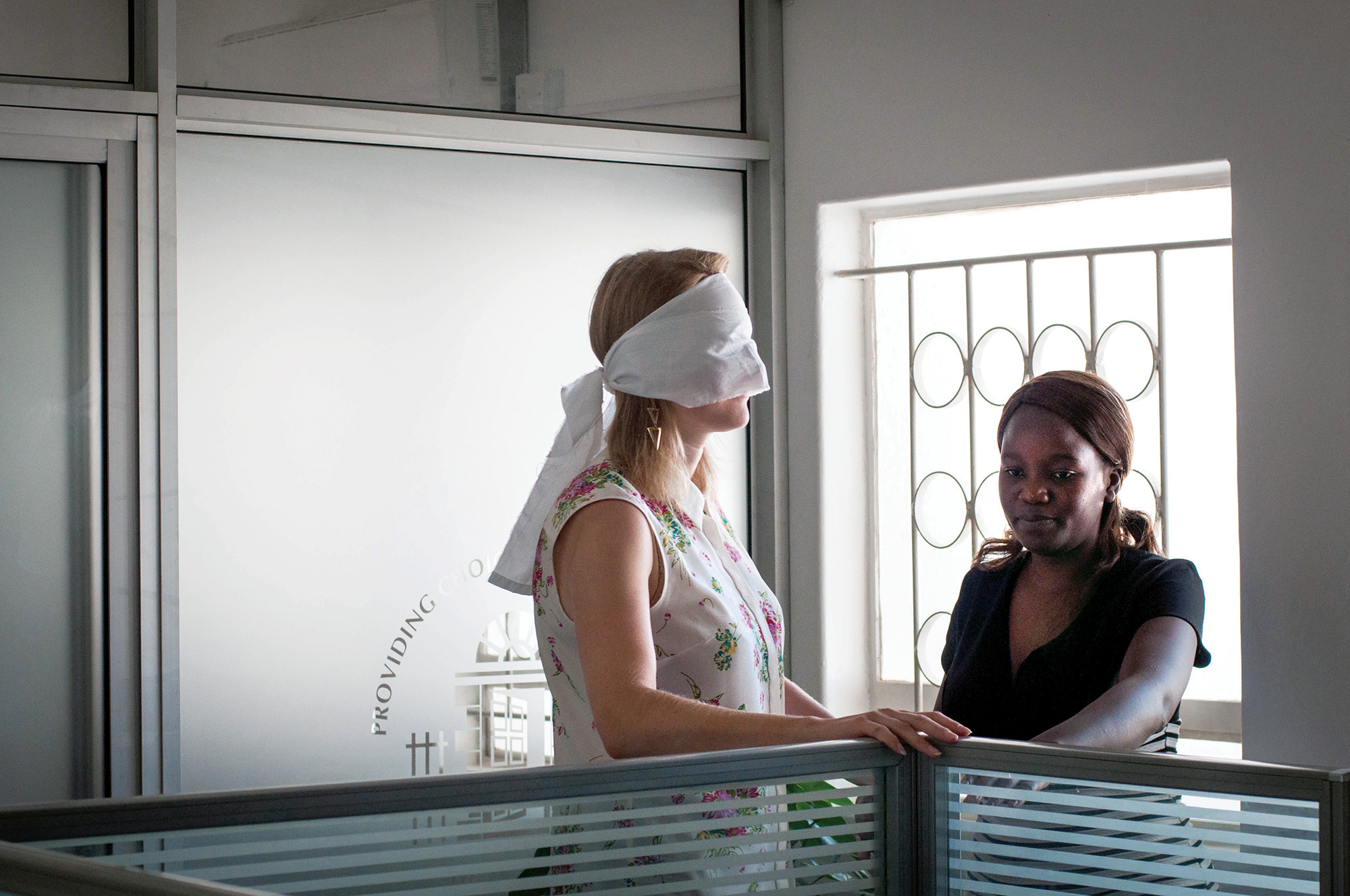
Currently, Prieto is gearing up for a project that will take her to Tanzania this spring on a topic close to her heart—family planning for teenagers. While she was a Fellow at IDEO.org she helped create “The Divine Divas,” a brand and environment targeted to young girls to learn about reproductive health in a nonintimidating format. “Family planning has enormous cultural taboos in Africa,” she says about how this upcoming program aims to empower young girls in the same friendly, comfortable manner.
As an independent contractor, Prieto is always expanding her social-designer repertoire. She might jump into an established organization on an as-needed basis, augment an existing team with a design consultancy, or build a specific team from scratch for a client.
“I have an amazing network of talented people to draw on,” she says. “It’s really an exciting time to be in the design field. To see it grow and really be a part of it from the ground up. I couldn’t ask for a better job. I truly love it.”




